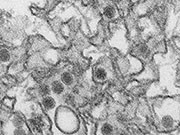OBGYN and Women's Health
Home OBGYN and Women's Health
CDC: Heart Disease Still Leading Cause of Death
Cancer next most likely cause of death, followed by stroke and chronic lower respiratory diseases
Poor Sensitivity for HPV 16/18 in Minor Abnormal Cytology
Review: pooled sensitivity of HPV 16/18 genotyping for CIN3+ about 70 percent for ASC-US or LSIL
Family History, Lifestyle Factors Impact Risk of Acne in Adulthood
Odds up for family or personal history, hirsutism, being an office worker, high psychological stress
Circulating Cell-Free DNA Can Predict RhD Status in Pregnancy
Only one false-negative diagnosis observed, which was found to be due to mislabeling of patients
Vaginal Immune Response May Up Zika Risk in Women
Findings suggest, when transmitted sexually, women are more susceptible to contracting RNA viruses
Ablative Fractional Laser Beneficial for C-Section Scars
Significant improvement in pliability and smoother in surface relief at one-month follow-up after AFXL
AHA: Secondhand Tobacco Smoke Ups Atherosclerosis Risk
Extent of SHTS exposure linked to presence, extent of atherosclerosis in asymptomatic never smokers
Depression Rates Up Among Adolescents, Particularly Females
Report authors suggest cyberbullying, social media use as possible causes
Cancer Patients Benefit From Exercise During, After Treatment
Studies show better physical function, quality of life for those who did strength training, aerobic activity
Oregon’s Hard-Stop Policy Tied to Drop in Elective Early Delivery
Reduction in rate of elective inductions before 39 weeks, and in elective early-term cesareans



















